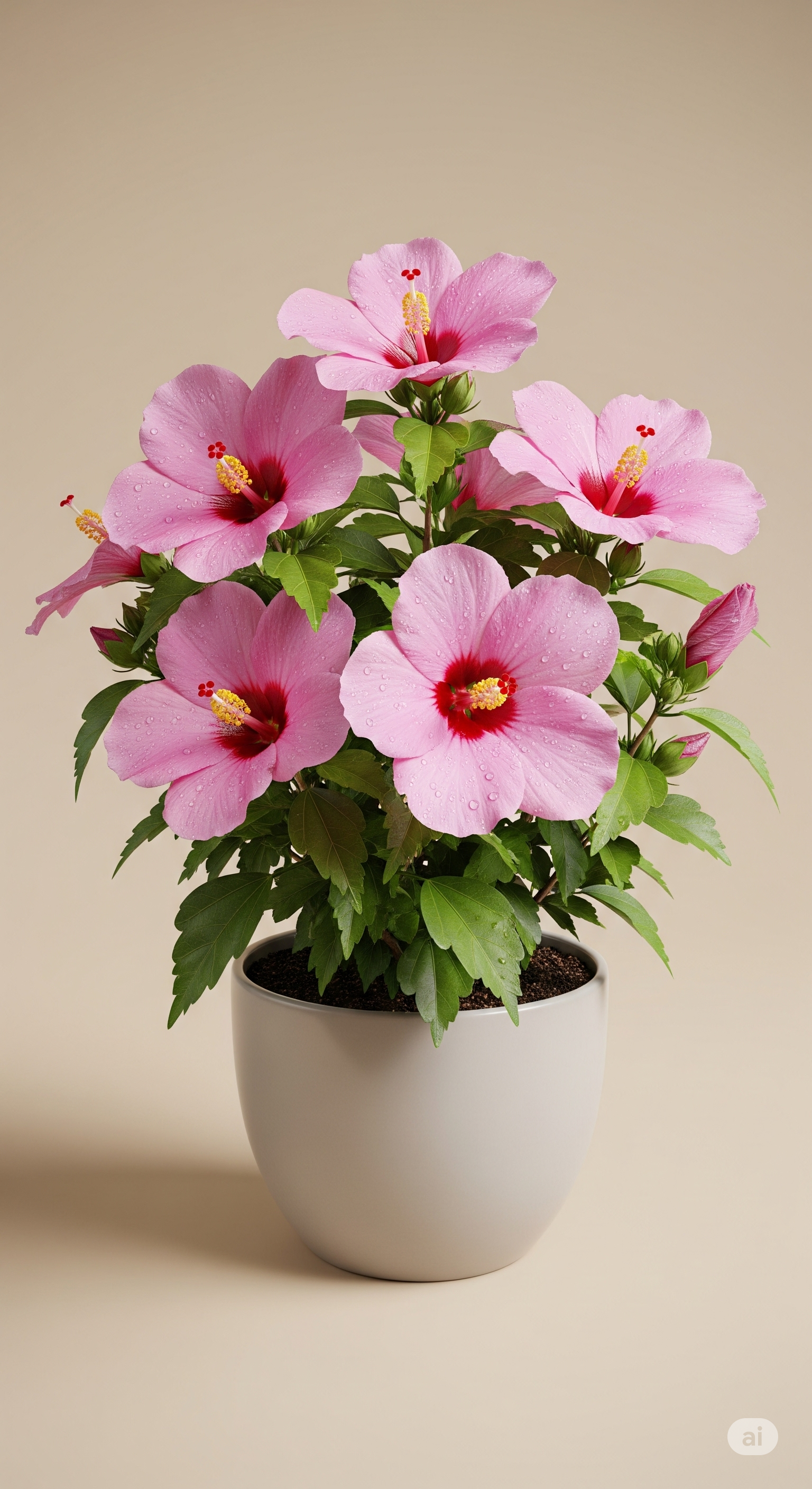Hibiscus syriacus

Scientific name: Hibiscus syriacus
☘️ Toxicity: Safe for cats
☀️ Ideal light: Full sun or partial shade with good brightness
💧 Watering: Moderate; keep the soil slightly moist in summer
The Rose of Sharon (Hibiscus syriacus) is a flowering shrub prized for its delicate blossoms in shades of pink, lilac, white, or purple. Native to Asia, it’s hardy, easy to care for, and completely safe for cats. Perfect for sunny gardens or potted patios that crave color and life.
Essential care
- Light: Prefers full sun but tolerates partial shade. More light equals more blooms.
- Water: Regular watering in summer; reduce frequency in winter.
- Soil: Fertile, well-draining mix with organic matter (2 parts soil, 1 part sand, 1 part compost).
- Environment: Ideal for sunny balconies and gardens; tolerates mild frost.
- Fertilization: Every two weeks in spring and summer with flower fertilizer (NPK 4-14-8).
- Pruning: After flowering to stimulate new growth and maintain shape.
Flowering
- Season: From spring through late summer.
- Duration: Each flower lasts 1–2 days, but the plant blooms continuously for months.
- Tip: More sunlight and regular pruning encourage abundant flowering.
Pests and how to handle them
- Aphids and whiteflies: Control with mild soap or neem oil spray.
- Mealybugs: Remove manually using cotton and 70% alcohol.
- Fungi: Avoid excess moisture and ensure good ventilation.
Propagation
- Cuttings: The most efficient method; root semi-woody stems in moist, airy soil.
- Seeds: Possible but slower to bloom.
Cat safety
- Classification: Non-toxic to cats (ASPCA).
- Best practice: Discourage cats from chewing flowers to protect both the plant and your décor.
💡 The hibiscus-syriacus is the national flower of South Korea, symbolizing endurance and timeless beauty.
Quick checklist
- ☀️ Full sun or partial shade
- 💧 Moderate watering
- 🪴 Fertile, well-draining soil
- ✂️ Prune after flowering
- 🐾 Safe for cats